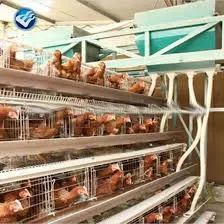pig pen fencing
Dec . 12, 2024 00:25 Back to list
pig pen fencing
Pig Pen Fencing Essential Considerations for Your Farm
Building a secure and effective pig pen is an essential task for any farmer raising pigs. The right fencing not only keeps your livestock contained but also protects them from predators and minimizes the risk of disease. In this article, we will explore practical guidelines and considerations for constructing a pig pen suitable for your needs.
Understanding Pig Behavior
To design an effective pig pen, it’s crucial to understand pig behavior. Pigs are intelligent and curious animals, known for their ability to root and dig. They will test the boundaries of their enclosure, so a strong, well-planned fence is essential. Additionally, pigs are social animals that thrive in groups, so adequate space and consideration for herd dynamics should influence your fencing layout.
Choosing the Right Fencing Material
When it comes to pig pen fencing, several materials can be used, each with its pros and cons
1. Wire Fencing This is a popular choice for many farmers. High-tensile wire fencing is strong and durable, making it suitable for containing pigs. It is essential to build the fencing with small openings (ideally 6 inches wide) to prevent pigs from escaping or getting stuck.
2. Stock Fencing Similar to wire fencing, stock fencing is designed specifically for containing livestock. It consists of horizontal and vertical wires that create a grid pattern. This type of fencing is robust and can withstand the pushing and rooting behavior of pigs.
3. Wooden Fencing Wooden fencing provides a strong barrier and has aesthetic appeal. However, it can be more expensive and requires regular maintenance to prevent rotting. Make sure the wooden posts are securely anchored and that the boards are tall enough (ideally, at least 4-5 feet high) to deter jumping.
4. Electric Fencing For more dynamic control, electric fencing can be an excellent option. It delivers a mild shock when pigs come into contact with the wire, discouraging them from attempting to escape. This method must be used cautiously and checked regularly to ensure the system functions properly.
pig pen fencing

Determining the Pen Size
The size of your pig pen is critical for the well-being of your pigs. Overcrowded conditions can lead to stress and aggressive behavior. Ideally, each pig should have a minimum of 20 square feet of space in a pen, but more space is preferable. Larger pens promote natural behaviors and allow for more comfortable living conditions.
Additional Considerations
Beyond the basic fencing requirements, several factors should also be taken into account
1. Height and Depth Ensure that your fencing is tall and extends underground to prevent digging. Pigs can be determined diggers, and they will burrow if they sense any weaknesses.
2. Shelter In addition to fencing, provide shelter within the pen to protect pigs from harsh weather. Structures should be well-ventilated, dry, and spacious enough to accommodate all pigs comfortably.
3. Accessibility and Maintenance Design your pig pen for ease of access. Ensure that gates are wide enough for feeding and care routines while allowing for easy cleaning and maintenance. Regular checks on the fencing condition will help identify wear and tear before they become a significant problem.
4. Predator Control Depending on your location, consider the potential for predation. Reinforcing sections of the fence with additional barriers or materials can further protect your pigs.
Conclusion
Building an effective pig pen is a multifaceted task that requires careful planning and execution. By understanding pig behavior and selecting appropriate materials, you can create a safe and functional environment that enhances the welfare of your pigs. Crafting a pen with enough space, proper shelter, and secure fencing not only helps in raising healthy pigs but also makes your farming experience more enjoyable and productive. Investing time and resources into the right pig pen design will ultimately yield long-term benefits for both you and your livestock.
-
Automatic Feeding Line System - Anping County Yize Metal Products Co., Ltd.|Pan Feeder Nipple Drinker,Broiler Farming
NewsJul.30,2025
-
Automatic Feeding Line System Pan Feeder Nipple Drinker-Anping County Yize Metal Products Co., Ltd.
NewsJul.30,2025
-
Automatic Feeding Line System-Anping County Yize Metal Products Co., Ltd.|Durable Construction&Easy Maintenance
NewsJul.30,2025
-
Automatic Feeding Line System-Anping County Yize Metal Products Co., Ltd.|Pan Feeder Nipple Drinker&Durable Poultry Farming Solution
NewsJul.30,2025
-
Automatic Feeding Line System Pan Feeder Nipple Drinker|Anping County Yize Metal Products Co., Ltd.
NewsJul.29,2025
-
Automatic Feeding Line System-Pan Feeder Nipple Drinker|Anping County Yize Metal Products Co., Ltd.
NewsJul.29,2025






